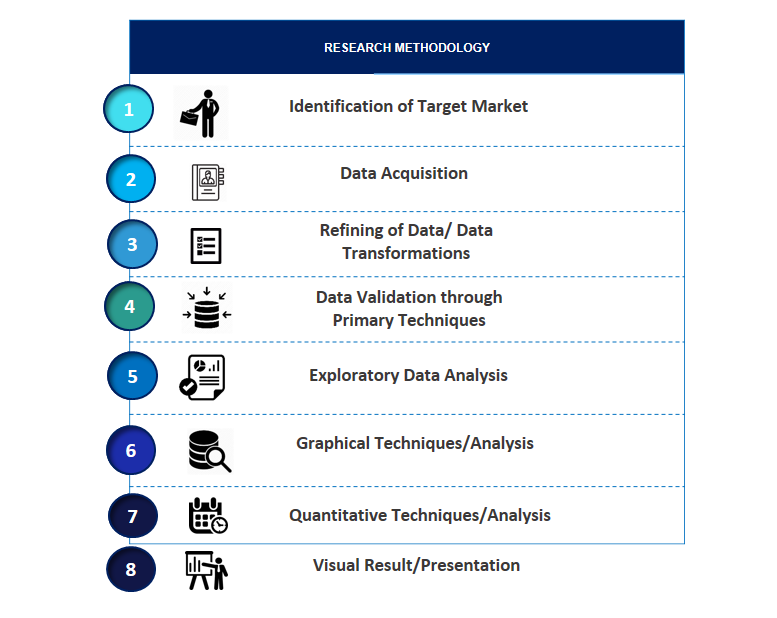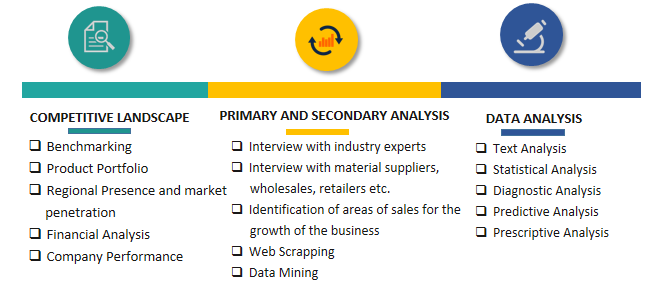Turkey Agricultural Machinery Market Introduction and Overview
According to SPER Market Research, the Turkey Agricultural Machinery Market is estimated to reach USD XX billion by 2033 with a CAGR of 7.6%.
The report includes an in-depth analysis of the Turkey Agricultural Machinery Market, including market size and trends, product mix, applications, and supplier analysis. The machinery or manufactured parts utilised in agro-based economies around the world to increase land output is known as agricultural equipment. The machinery greatly encourages farmers and landowners to incorporate automation technologies into their conventional farming practices. Customers are also being pushed to accept the advantages of modern technology in farming applications by the increasing shortage of human labour and the expensive cost of maintaining animals on construction sites across many nations.
- In February 2022, Massey Ferguson introduced the MF 6S tractor series. This machine has superior technology and can produce up to 180 HP.
- AGCO and AgRevolution demonstrated new solutions from Fendt, Massey Ferguson, and Massey Ferguson Hesston at National Farm Machinery in Louisville, Kentucky, in February 2022.
- March 2021: CNH Industrial formed a partnership with Monarch Tractors, a US-based agriculture technology company, to improve long-term sustainability and raise farmer understanding of the necessity of zero-emission farming.
Market Opportunities and Challenges
Opportunities- Agricultural machinery has grown steadily throughout Europe and North America over the research period. Rising mechanisation in the regional agriculture industry, as well as increased farmer income, are expected to be key drivers of growth. Furthermore, as the pressure to increase agricultural land productivity grows, it is projected to continue throughout the forecast period. As a result, farmers and land operators are likely to embrace more automation technologies in their equipment. While agriculture remains a vital component in the region's economy, the number of people working in it has decreased significantly. This has caused an annual labour shortage catastrophe in the agricultural business. Thus, the shortage of farm labour raised wage rates in the industry, increasing demand for farm machinery and contributing to market growth throughout the projection period.
Challenges-
High Maintenance Costs and Excessive Initial Procurement Costs to Limit Market Growth
Agriculture's expansion and the agricultural sector's technological advancement drive up input costs for equipment commissioning on farms. In addition, using such automated farming equipment means higher maintenance and operating costs, which lowers income from farming activities. Farmers were concerned about the need for experienced labour to manage and oversee operations due to the complex machine's participation in farming activities. Furthermore, the growing amount of agricultural machinery, which is becoming heavier with time, causes soil compaction and can occasionally harm crops or food products. Modern farming equipment thus encourages overuse of mechanised fertiliser spreaders by the farm operator, leading to equipment malfunction or frequent maintenance.
Market Competitive Landscape
The agricultural machinery market is consolidated, with top companies controlling the majority of the market share. Prominent market players include Erkunt Traktr Sanayii AS, CNH Industrial NV, Tumosan Tractors Europe, Uzel Corporation, Hattat Holding AS, AGCO Corporation, Turk Tractor and Agricultural Machinery Corporation, Deere & Company.
Scope of the Report:
| Report Metric | Details |
| Market size available for years | 2020-2033 |
| Base year considered | 2023 |
| Forecast period | 2024-2033 |
| Segments covered | By Type
|
| Regions covered | Eastern Region, Western Region, Southern Region, Northern Region
|
| Companies Covered | Erkunt Traktr Sanayii AS, CNH Industrial NV, Tumosan Tractors Europe, Uzel Corporation, Hattat Holding AS, AGCO Corporation, Turk Tractor and Agricultural Machinery Corporation, Deere & Company.
|
COVID-19 Impact on Turkey Agricultural Machinery Market
The COVID-19 outbreak produced a modest downturn in the agricultural equipment industry in 2020. Government-imposed restrictions to combat the new coronavirus resulted in the temporary shutdown of manufacturing facilities, causing production delays. As a result, the industry experienced a decline in the first half of 2020. Several players, including AGCO Industries, Deere & Company, and Kubota Corporation, saw a drop in agricultural equipment sales in H1/2020. However, as governments opened up their economies in H2/2020, demand for agricultural equipment recovered and increased by double digits, a pattern that persisted until H1/2021.
Key Target Audience:
- Farmers and Agricultural Producers
- Agricultural Machinery Manufacturers
- Distributors and Dealers of Agricultural Equipment
- Agribusiness Corporations
- Government and Regulatory Bodies
- Agricultural Cooperatives
- Research and Development Institutes
- Financial Institutions and Investors
- Agricultural Consultants
- Educational and Training Institutions
Our in-depth analysis of the Turkey Agricultural Machinery Market includes the following segments:
|
By Type:
|
Tractors
Plowing and Cultivating Machinery
Planting Machinery
Irrigation Machinery
Harvesting Machinery
Haying and Forage Machinery
Other Types
|
Key Topics Covered in the Report:
- Turkey Agricultural Machinery Market Size (FY’2024-FY’2033)
- Overview of Turkey Agricultural Machinery Market
- Segmentation of Turkey Agricultural Machinery Market By Type (Tractors, Plowing and Cultivating Machinery, Planting Machinery, Irrigation Machinery, Harvesting Machinery, Haying and Forage Machinery, Other Types)
- Statistical Snap of Turkey Agricultural Machinery Market
- Expansion Analysis of Turkey Agricultural Machinery Market
- Problems and Obstacles in Turkey Agricultural Machinery Market
- Competitive Landscape in the Turkey Agricultural Machinery Market
- Impact of COVID-19 and Demonetization on Turkey Agricultural Machinery Market
- Details on Current Investment in Turkey Agricultural Machinery Market
- Competitive Analysis of Turkey Agricultural Machinery Market
- Prominent Players in the Turkey Agricultural Machinery Market
- SWOT Analysis of Turkey Agricultural Machinery Market
- Turkey Agricultural Machinery Market Future Outlook and Projections (FY’2024-FY’2033)
- Recommendations from Analyst
1. Introduction
1.1. Scope of the report
1.2. Market segment analysis
2. Research Methodology
2.1. Research data source
2.1.1. Secondary Data
2.1.2. Primary Data
2.1.3. SPER’s internal database
2.1.4. Premium insight from KOL’s
2.2. Market size estimation
2.2.1. Top-down and Bottom-up approach
2.3. Data triangulation
3. Executive Summary
4. Market Dynamics
4.1. Driver, Restraint, Opportunity and Challenges analysis
4.1.1. Drivers
4.1.2. Restraints
4.1.3. Opportunities
4.1.4. Challenges
4.2. COVID-19 Impacts of the Turkey Agricultural Machinery Market.
5. Market variable and outlook
5.1. SWOT Analysis
5.1.1. Strengths
5.1.2. Weaknesses
5.1.3. Opportunities
5.1.4. Threats
5.2. PESTEL Analysis
5.2.1. Political Landscape
5.2.2. Economic Landscape
5.2.3. Social Landscape
5.2.4. Technological Landscape
5.2.5. Environmental Landscape
5.2.6. Legal Landscape
5.3. PORTER’s Five Forces
5.3.1. Bargaining power of suppliers
5.3.2. Bargaining power of buyers
5.3.3. Threat of Substitute
5.3.4. Threat of new entrant
5.3.5. Competitive rivalry
5.4. Heat Map Analysis
6. Competitive Landscape
6.1. Turkey Agricultural Machinery Market Manufacturing Base Distribution, Sales Area, Product Type
6.2. Mergers & Acquisitions, Partnerships, Product Launch, and Collaboration in Turkey Agricultural Machinery Market
7. Turkey Agricultural Machinery Market, By Type (USD Million) 2020-2033
7.1. Turkey Agricultural Machinery Market Size, Share and Forecast, By Type, 2020-2026
7.2. Turkey Agricultural Machinery Market Size, Share and Forecast, By Type, 2027-2033
7.3. Tractors
7.4. Plowing and Cultivating Machinery
7.5. Planting Machinery
7.6. Irrigation Machinery
7.7. Harvesting Machinery
7.8. Haying and Forage Machinery
7.9. Other Types
8. Turkey Agricultural Machinery Market Forecast, 2020-2033 (USD Million)
8.1. Turkey Agricultural Machinery Market Size and Market Share
9. Turkey Agricultural Machinery Market, By Region, 2020-2033 (USD Million)
9.1. Turkey Agricultural Machinery Market Size and Market Share By Region (2020-2026)
9.2. Turkey Agricultural Machinery Market Size and Market Share By Region (2027-2033)
9.3. Eastern Region
9.4. Western Region
9.5. Southern Region
9.6. Northern Region
10. Company Profile
10.1. Erkunt Traktr Sanayii AS
10.1.1. Company details
10.1.2. Financial outlook
10.1.3. Product summary
10.1.4. Recent developments
10.2. CNH Industrial NV
10.2.1. Company details
10.2.2. Financial outlook
10.2.3. Product summary
10.2.4. Recent developments
10.3. Tumosan Tractors Europe
10.3.1. Company details
10.3.2. Financial outlook
10.3.3. Product summary
10.3.4. Recent developments
10.4. Uzel Corporation
10.4.1. Company details
10.4.2. Financial outlook
10.4.3. Product summary
10.4.4. Recent developments
10.5. Hattat Holding AS
10.5.1. Company details
10.5.2. Financial outlook
10.5.3. Product summary
10.5.4. Recent developments
10.6. AGCO Corporation
10.6.1. Company details
10.6.2. Financial outlook
10.6.3. Product summary
10.6.4. Recent developments
10.7. Turk Tractor and Agricultural Machinery Corporation
10.7.1. Company details
10.7.2. Financial outlook
10.7.3. Product summary
10.7.4. Recent developments
10.8. Deere & Company
10.8.1. Company details
10.8.2. Financial outlook
10.8.3. Product summary
10.8.4. Recent developments
10.9. Others
11. Conclusion
12. List of Abbreviations
13. Reference Links
SPER Market Research’s methodology uses great emphasis on primary research to ensure that the market intelligence insights are up to date, reliable and accurate. Primary interviews are done with players involved in each phase of a supply chain to analyze the market forecasting. The secondary research method is used to help you fully understand how the future markets and the spending patterns look likes.
The report is based on in-depth qualitative and quantitative analysis of the Product Market. The quantitative analysis involves the application of various projection and sampling techniques. The qualitative analysis involves primary interviews, surveys, and vendor briefings. The data gathered as a result of these processes are validated through experts opinion. Our research methodology entails an ideal mixture of primary and secondary initiatives.


